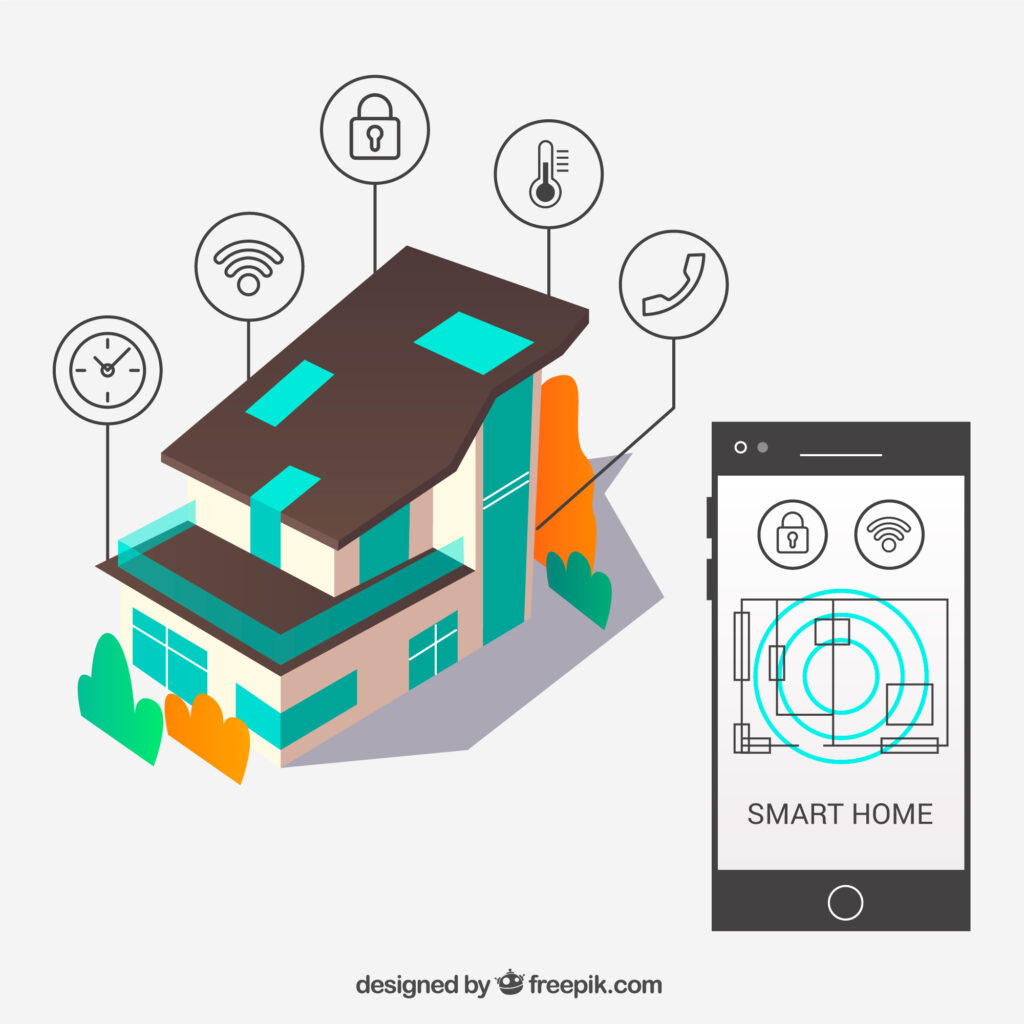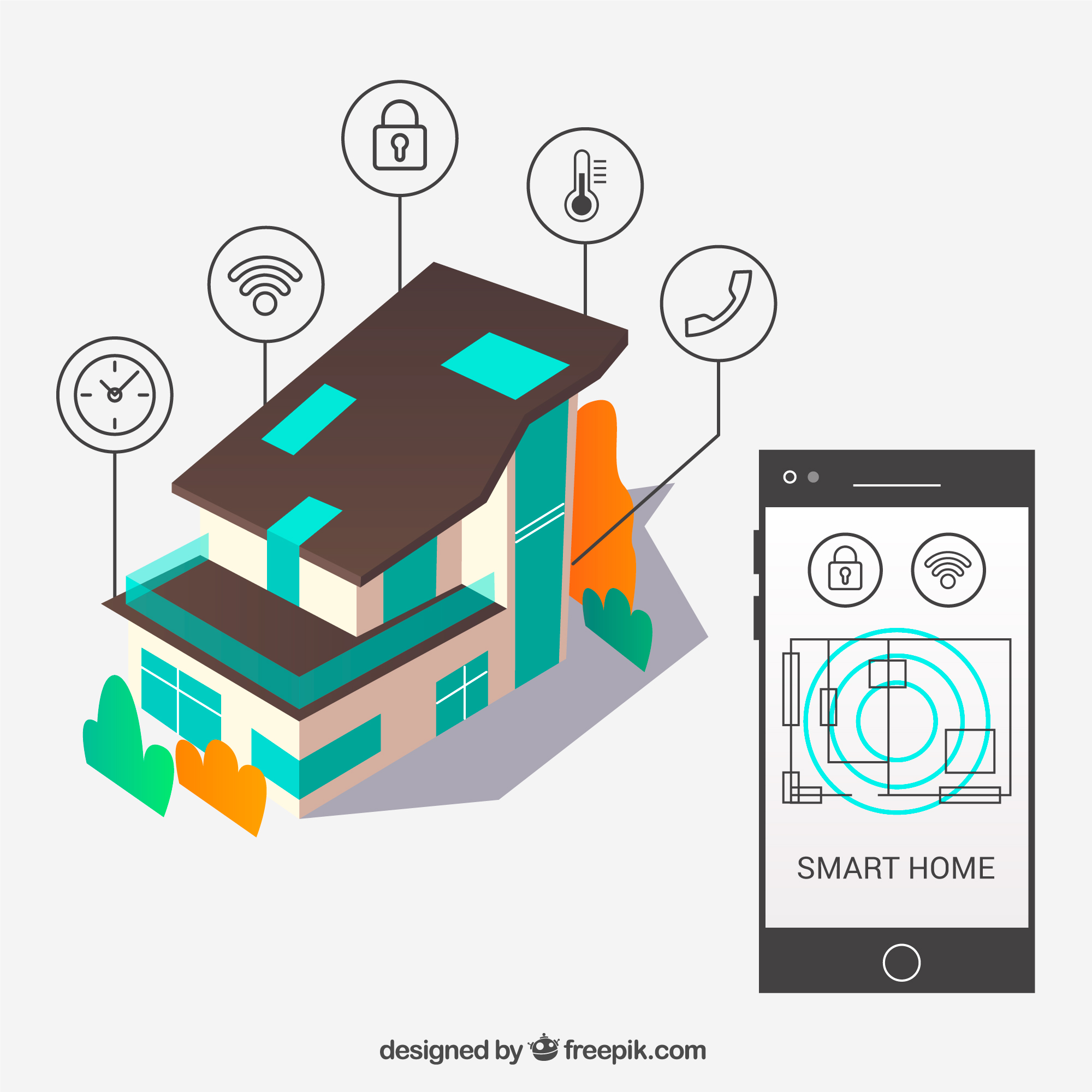In recent years, the rise of smart home technology has transformed the way we live, making our lives more convenient, comfortable, and secure. From controlling household appliances remotely to enhancing energy efficiency, these advancements have revolutionized the concept of modern living. This article delves into the evolution of smart home technology, exploring its growth, applications, and the myriad ways it has contributed to making our lives easier and safer.

A Brief History of Smart Home Technology
The concept of a “smart home” dates back to the early 20th century when science fiction authors like Ray Bradbury and Isaac Asimov imagined homes with automated systems. However, it was not until the late 20th century that the first practical applications of smart home technology emerged. Early innovations such as home automation systems, programmable thermostats, and remote-controlled lighting laid the foundation for what was to come.
The Rise of Internet of Things (IoT) and Connectivity
The true revolution of smart home technology came with the widespread adoption of the Internet of Things (IoT). IoT refers to the interconnection of various devices via the internet, enabling them to collect and exchange data. Smart home devices, equipped with sensors and Wi-Fi connectivity, started to flood the market, enabling seamless communication between devices and users. This connectivity opened up a world of possibilities for homeowners seeking more control over their living spaces.
Smart Home Devices and Their Applications
Today, smart home technology encompasses a vast array of devices designed to enhance various aspects of home life. Some popular examples include:
a. Smart Speakers: Virtual assistants like Amazon Echo (Alexa) and Google Home (Google Assistant) serve as central hubs, allowing users to control other smart devices through voice commands. From adjusting thermostats to playing music, these devices have become indispensable tools for smart homeowners.
b. Smart Thermostats: The evolution of thermostats from manual to programmable and eventually to smart versions has been significant. Smart thermostats learn user preferences, adapt to schedules, and can be controlled remotely, leading to increased energy efficiency and cost savings.
c. Smart Security Systems: Home security has seen a dramatic transformation with the advent of smart cameras, doorbell cameras, and motion sensors. Homeowners can monitor their property in real-time, receive alerts, and even communicate with visitors remotely, bolstering safety and peace of mind.
d. Smart Lighting: Lighting systems with remote controls, motion sensors, and color-changing capabilities provide convenience and energy efficiency. Users can customize lighting schedules and ambiance to suit their preferences.
e. Smart Appliances: From smart refrigerators that keep track of inventory to smart ovens that can be preheated remotely, these appliances simplify daily tasks and enhance kitchen management.
f. Smart Locks: Keyless entry systems that offer enhanced security by allowing homeowners to remotely lock and unlock doors, providing temporary access to guests, and monitoring entries.
The Impact on Daily Life
The widespread adoption of smart home technology has had a profound impact on our daily lives. One of the most significant benefits is the enhanced convenience it offers. With the ability to control various devices through smartphones or voice commands, tasks that once required manual effort are now accomplished with ease. For instance, adjusting the thermostat from the comfort of your bed or turning off forgotten appliances remotely provides unparalleled comfort and peace of mind.
Moreover, smart home technology has streamlined household management, leading to increased efficiency. Automated systems can optimize energy usage, reducing utility bills and minimizing environmental impact. With smart meters and energy monitoring devices, homeowners can now track and regulate their energy consumption in real-time.
Additionally, the integration of smart home security systems has significantly improved safety levels for homeowners. The ability to monitor activities through smart cameras, receive instant alerts in case of suspicious events, and remotely control access to the house enhances security, even when residents are away.
Smart Home Technology and Accessibility
An often overlooked but essential aspect of smart home technology is its potential to make homes more accessible to individuals with disabilities or the elderly. Smart devices can be programmed to assist those with mobility issues or cognitive impairments. Voice-activated controls and automated routines enable them to manage their living spaces more easily, fostering independence and dignity.
Challenges and Concerns
While smart home technology presents a plethora of advantages, it is not without its challenges and concerns. One of the primary concerns is data security and privacy. As smart devices collect and transmit data, there is a risk of unauthorized access and potential misuse of personal information. Manufacturers and users must prioritize robust security measures to protect sensitive data.
Another challenge is the potential interoperability issues between different smart devices. As the market is flooded with various manufacturers and technologies, ensuring seamless communication and integration among devices can be a complex task.
The Future of Smart Home Technology
The evolution of smart home technology is far from over. With advancements in artificial intelligence (AI), machine learning, and 5G technology, the possibilities for further innovation are limitless. Future smart homes may feature even more sophisticated and autonomous systems, catering to residents’ preferences without explicit instructions.
Conclusion
In conclusion, the evolution of smart home technology has profoundly impacted modern living. From its humble beginnings as basic automation systems to the complex IoT-powered devices we have today, smart home technology continues to make life easier and safer for homeowners. As we move into the future, the continuous development of innovative smart devices promises to transform our homes into even more efficient, comfortable, and secure living spaces. With responsible implementation and a focus on data security, the future of smart home technology appears to be bright, enhancing our lives in ways we could only dream of just a few decades ago.
Related Articles:
1. 10 Benefits of Smart Home Technology
2. What is a Smart Home? Everything You Need to Know
3. Home Technologies That Can Make a Life Easier and Safer




